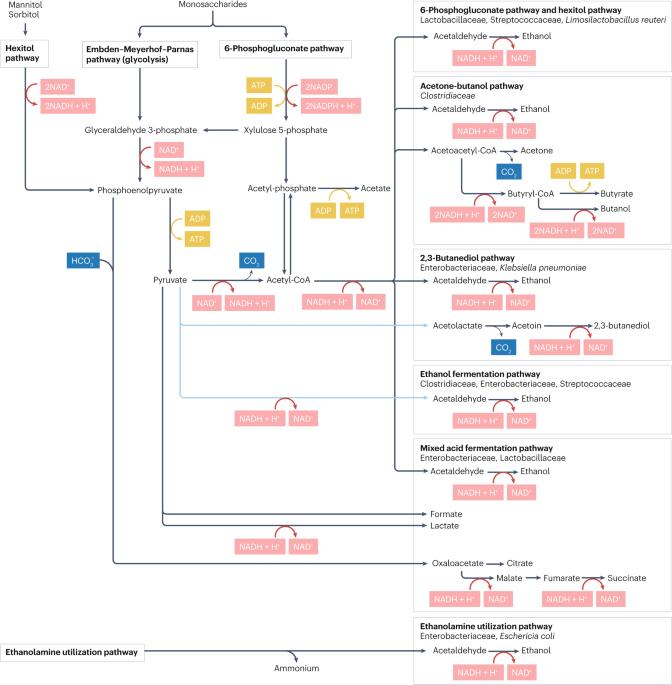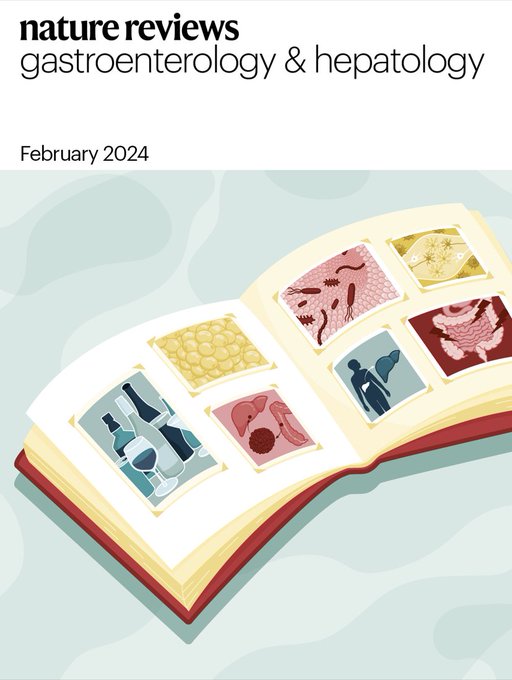健康和疾病中的内源性乙醇生成。
IF 45.9
1区 医学
Q1 GASTROENTEROLOGY & HEPATOLOGY
引用次数: 0
摘要
肠道微生物组对肠道外的远端组织和器官产生代谢作用,部分是通过扩散到血液循环中的微生物代谢物实现的。肠道平衡的破坏会导致微生物代谢物的变化,血浆代谢组中一半以上的差异可由肠道微生物组来解释。乙醇是一种主要的微生物代谢物,几乎所有个体的肠道中都会产生乙醇;然而,乙醇生成的增加与代谢功能障碍相关性脂肪肝和自酿综合征等病理状况有关,在这些病理状况中,肝脏代谢乙醇的能力被超越。在本综述中,我们阐述了肠道中乙醇产生过多的内在机制,以及乙醇分解在介导乙醇对肝脏和宿主新陈代谢的致病作用方面所起的作用。最后,我们将讨论针对肠道细菌产生过量乙醇的方法。本文章由计算机程序翻译,如有差异,请以英文原文为准。


Endogenous ethanol production in health and disease
The gut microbiome exerts metabolic actions on distal tissues and organs outside the intestine, partly through microbial metabolites that diffuse into the circulation. The disruption of gut homeostasis results in changes to microbial metabolites, and more than half of the variance in the plasma metabolome can be explained by the gut microbiome. Ethanol is a major microbial metabolite that is produced in the intestine of nearly all individuals; however, elevated ethanol production is associated with pathological conditions such as metabolic dysfunction-associated steatotic liver disease and auto-brewery syndrome, in which the liver’s capacity to metabolize ethanol is surpassed. In this Review, we describe the mechanisms underlying excessive ethanol production in the gut and the role of ethanol catabolism in mediating pathogenic effects of ethanol on the liver and host metabolism. We conclude by discussing approaches to target excessive ethanol production by gut bacteria. Ethanol is produced in the gut by several different species of fermentative bacteria. This Review discusses the sources and consequences of endogenously produced ethanol, explores its relationship with liver diseases such as metabolic dysfunction-associated steatotic liver disease and covers approaches to target excessive ethanol production in the gut.
求助全文
通过发布文献求助,成功后即可免费获取论文全文。
去求助
来源期刊
CiteScore
52.30
自引率
0.60%
发文量
147
审稿时长
6-12 weeks
期刊介绍:
Nature Reviews Gastroenterology & Hepatology aims to serve as the leading resource for Reviews and commentaries within the scientific and medical communities it caters to. The journal strives to maintain authority, accessibility, and clarity in its published articles, which are complemented by easily understandable figures, tables, and other display items. Dedicated to providing exceptional service to authors, referees, and readers, the editorial team works diligently to maximize the usefulness and impact of each publication.
The journal encompasses a wide range of content types, including Research Highlights, News & Views, Comments, Reviews, Perspectives, and Consensus Statements, all pertinent to gastroenterologists and hepatologists. With its broad scope, Nature Reviews Gastroenterology & Hepatology ensures that its articles reach a diverse audience, aiming for the widest possible dissemination of valuable information.
Nature Reviews Gastroenterology & Hepatology is part of the Nature Reviews portfolio of journals.

 求助内容:
求助内容: 应助结果提醒方式:
应助结果提醒方式:


